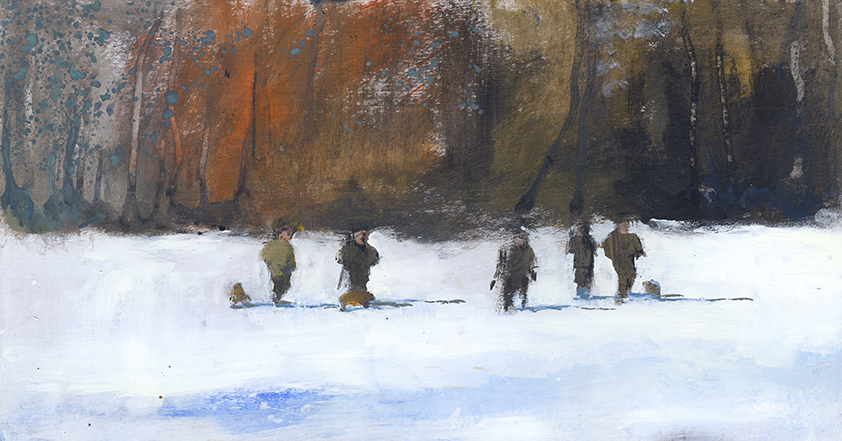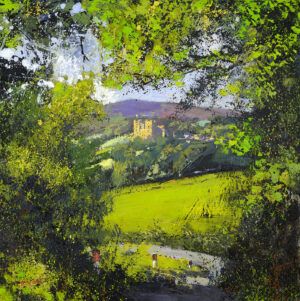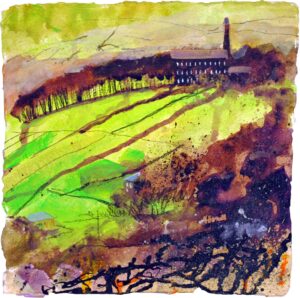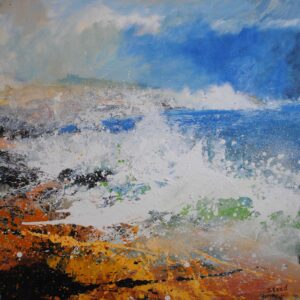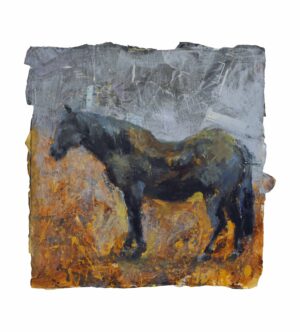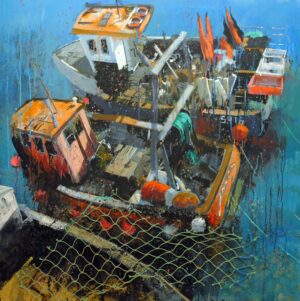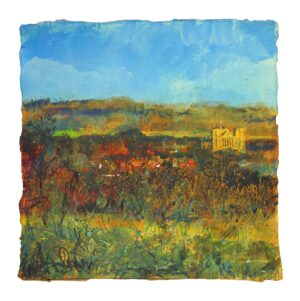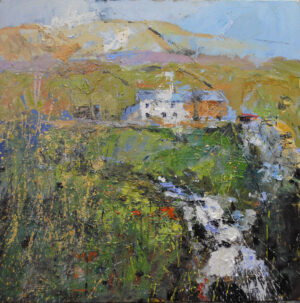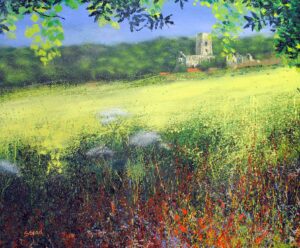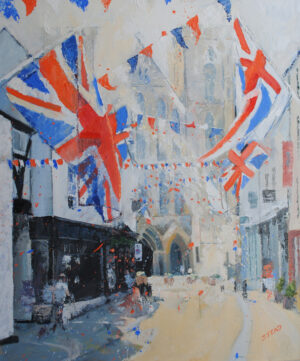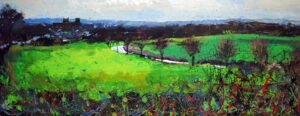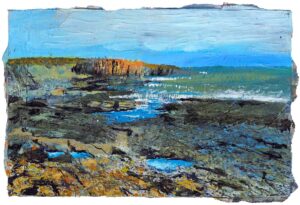After The Drive
Price range: £180.00 through £1,200.00 including VAT
David Stead’s After the Drive is a rich, evocative and loosely rendered painting that communicates the quiet aftermath of a rural shooting party. Painted largely with fingers and rags rather than brushes in his Norton Conyers studio, the tactile and intuitive method is evident in the textured, impressionistic treatment of the landscape and figures. This technique imbues the scene with a sense of immediacy and emotional resonance, emphasizing atmosphere over precision.
Colours
The painting’s palette is restrained yet expressive. The snowy ground dominates the lower half of the canvas, rendered in cool, milky whites and soft blues that reflect the winter light. These tones contrast gently with the deeper, moodier colours of the background forest. The trees are painted in dense earthy browns, blacks, and deep greens, punctuated by a dramatic splash of burnt orange and rusty red, suggesting the lingering fire of autumn clinging to the bare woodland or possibly the bark catching the winter light. Subtle touches of turquoise and pale blue speckle the upper left, perhaps suggesting dappled light through branches or a textured snowfall.
The figures themselves—likely beaters or shooters and their dogs—are rendered in muted browns, greys, and olive greens, blending harmoniously with the natural tones of the landscape. They do not dominate the scene but are part of it, reinforcing a sense of harmony between people and place.
Composition
The composition is horizontal and panoramic, emphasizing the wide, open expanse of snowy ground. The line of figures walking toward the viewer draws the eye deeper into the scene, toward the treeline. The group is loosely spaced, suggesting a casual dispersal after the excitement of a driven shoot. This spacing enhances the sense of calm and introspection that settles over the scene.
The forest forms a dense backdrop, its height and darkness grounding the composition and providing a dramatic contrast to the white foreground. The absence of detailed facial features or clearly defined outlines in the figures adds to the anonymity and universality of the scene—it becomes less a portrait of specific people and more a meditation on a timeless rural tradition.
Mood
The mood of After the Drive is reflective and subdued. There’s a sense of closure—the title itself implies that the moment of action (the “drive”) has passed, leaving behind a scene of quietude and contemplation. The figures walk slowly, possibly tired, absorbed in their thoughts, while the dogs trail or sit obediently nearby. The cool tones and soft textures evoke the chill of winter, the crunch of snow underfoot, and the silence that often follows snowfall or the end of a day’s work outdoors.
Stead’s use of finger painting adds to the visceral quality of the work; the smeared, organic textures suggest an artist physically connected to the landscape. The result is a painting that feels both intimate and expansive, rooted in a specific English rural tradition yet resonant with broader themes of human connection to land, labour, and season.
Paper Print
Dimensions: 60 × 31 cm
Description: This print is limited to an edition of only 200 and is signed by David. Our paper prints are printed on Fourdrinier, 350gsm acid-free museum quality paper with a high white finish and a silky smooth surface. The size Quoted is the image size

